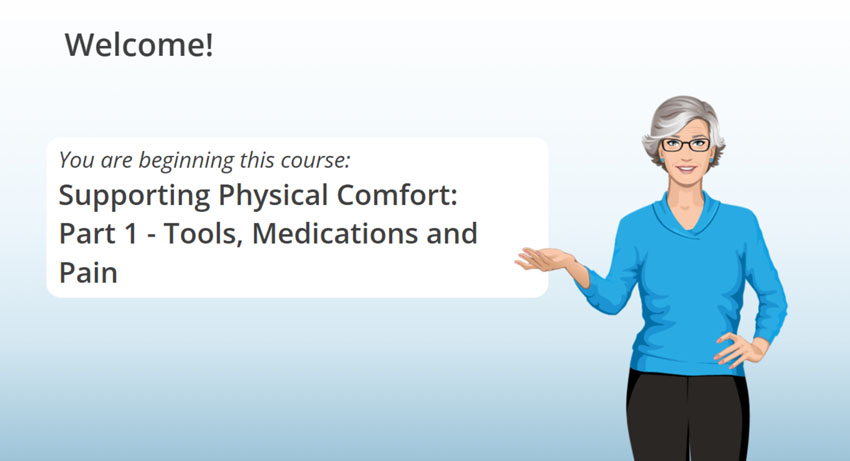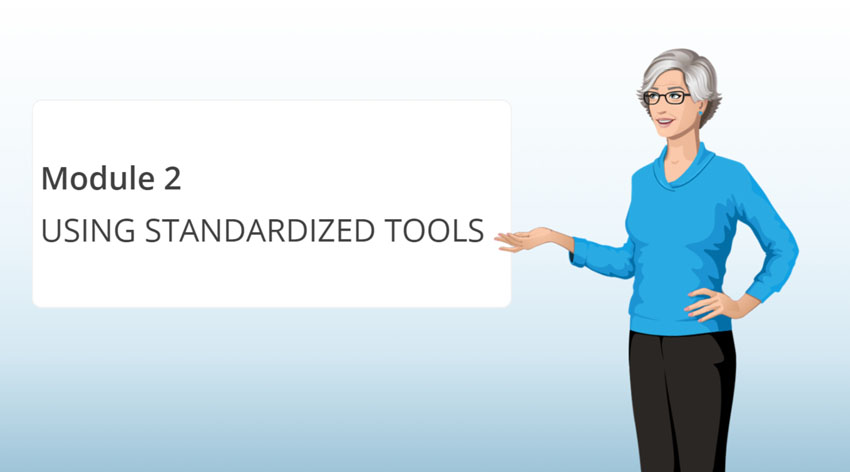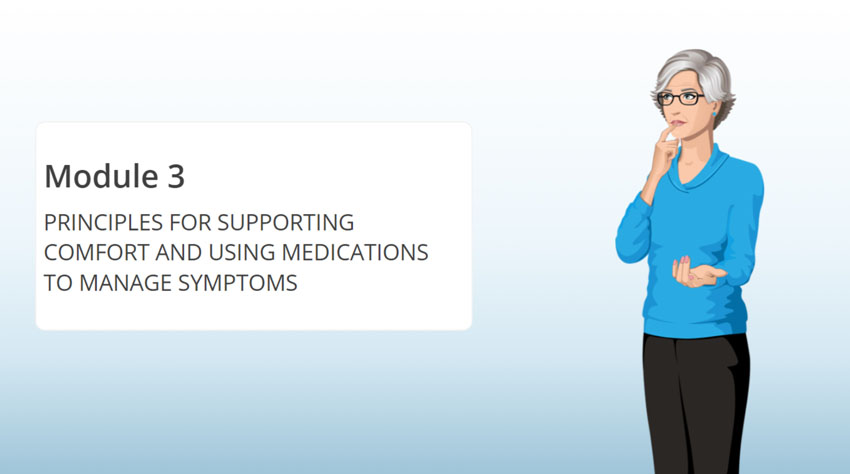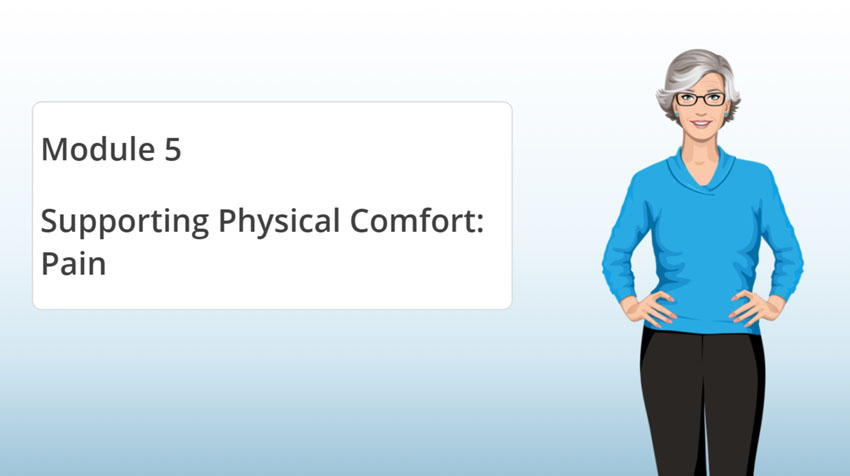Module 1: The Vital Role of PSWs
PSWs are vital to the palliative care team. Find out why.

Module 1 provides the learning outcomes for this course and explores the concept that PSWs are central to providing excellent care for a dying person and their family.
Module 2 Gathering Information Using Standardized Tools
Learn about the tools used in palliative care that will help you to gather essential information, and to record and report information to the team.

What is a standardized tool and why is it important? This module answers these questions and provides step-by step instructions for working with common tools used for information gathering and communicating in palliative care. Case scenarios provide opportunities to practice with these tools and learn first hand how they work.
Module 3 Principles of Supporting Comfort and Using Medications to Manage Symptoms
Following these principles when providing palliative care will help you to better support a dying person and their family.

In Module 3, the principles that guide caregivers to know how to support comfort and use medication to manage symptoms in palliative care are explained. Non-pharmacological measures for supporting comfort are introduced and students are invited to build a comfort basket to use in their practice.
Module 4 Fears and Concerns About Opioids
The fears and concerns that people express about using opioids to manage symptoms can prevent them from receiving the care they need. Learn about common fears and concerns and how to support the person who expresses the concerns.

Many people express fears and concerns about using opioids to manage symptoms in palliative care, especially given the current opioid crisis of accidental overdoses. This module explores the fears and concerns, and provides practical and supportive ways for PSWs when the person or family ask questions about opioids.
Module 5 Pain
Pain is one of the common symptoms people with life-limiting illnesses experience. Discover how to gather information about pain and ways to support a person experiencing pain.

Module 5 discusses common causes of pain, ways for PSWs to gather information, support care wishes and advance care planning, and provides practical ways to support physical comfort.
Module 6 Course Quiz
Welcome to the final module for this course.
Requirements: 70% or greater to pass the course.
3 opportunities to pass the quiz.
The answer key is shown only after you have passed the quiz.
Check here before starting the quiz
Have you viewed, or clicked on all slides of all modules?
If you have missed any slides, the quiz will NOT be graded.
You will know you have missed slides if you submit the quiz for grading, and you do not get a grade for it within minutes.
How to fix this
- Go back into the modules, select "Menu" in the top left (red circle in image below). This view displays all the slides in the module.
- A viewed slide will have a check mark beside it (Red arrows are pointing at the check marks).
- If a slide does not have a check mark beside it, click the title to set it as viewed. A check mark will appear.
- Repeat this process for all modules of the course.
- When finished, open the quiz module. You will now be able to submit the quiz for grading.

Good luck!